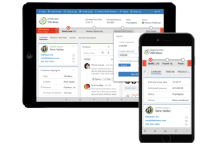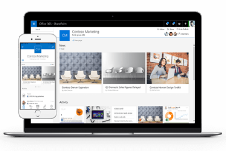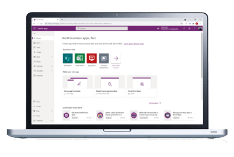Table of contents
Create a Lead in Dynamics 365 for Sales (CRM)
- In the navigation, select Leads.
- Select + New.
- On the Summary tab begin entering data:
- In the Contact section, enter the noted information. The information entered here will be used to create a Contact record when this lead is converted to an Opportunity.
- Now enter all the necessary information in the Company section. The information entered here will be utilized in creating the Account record when this lead is converted into an Opportunity.
- On the Details tab, fill out the Description, Industry, Annual Revenue, No. of Employees.
- In the Stakeholders section, select the More Commands button
 , and then select + New Connection to add a contact as a stakeholder. A stakeholder is a key contact at the account who will be involved in decision-making. Only fill this out if you have someone other than the primary contact to keep track of.
, and then select + New Connection to add a contact as a stakeholder. A stakeholder is a key contact at the account who will be involved in decision-making. Only fill this out if you have someone other than the primary contact to keep track of. - In the Lookup Records dialog box, enter a name or select the Lookup icon to choose from a list of suggestions. When you've entered the name you want, select Add. To create a new contact, select + New. By default, the contact you add is assigned the Stakeholder role. Select the role corresponding to the contact to select a different role such as Decision Maker or Technical Buyer.
- In the Details area of the Lead form, enter information about your lead's industry and preferred contact method.
- On the command bar, select Save.
Qualify a Lead (Creates an Opportunity)
Do you have what you're lead is looking for and vice versa? After you've identified the timeframe, budget, purchase process, and decision makers for the sale, it's time to qualify your lead if there is an interest in what you offer.
Your system administrator defines and configures what happens to a lead when it is qualified:
- If your system administrator has set the creation of additional records default to No, (Account, Contact, and Opportunity records), you will be prompted upon qualification to choose the specific records that are created when the lead is qualified.
- If the system has been set by default to automatically create these records (meaning Yes), upon qualification, then the account, contact, and opportunity record is created automatically when the lead is qualified.
To qualify a lead in Dynamics 365
- Navigate to Leads.
- In the list of leads, open the lead you want to qualify by clicking on it's name.
- In the Qualify section of the sales process bar, enter all applicable information you want to track.
- On the command bar, select Qualify.
- If you see a prompt to select which records to create when the lead is qualified, select Yes for the records that you want to create, and then select OK.
Your lead is moved to the next stage of the business process flow. The next stage is based on what your organization has defined and subsequently been configured into your Dynamics CRM system.
Note: If an opportunity isn't created when qualifying a lead, the business process flow doesn't progress to the next , although the lead status becomes qualified.
What is Microsoft Dynamics CRM?
Microsoft Dynamics CRM is a customer relationship management CRM software package developed by Microsoft. The product focuses on sales, marketing, and service sectors, but Microsoft has been marketing Microsoft Dynamics 365 for Sales as a CRM platform.
CRM solutions is a category of software solutions that spans different customer management systems—such as sales, field service, and marketing—and allows them to work together. It streamlines your business processes and connects customer data to help you build relationships, increase productivity, and improve customer engagement.
An effective customer relationship management tool assists with the automation of tasks, offers insights, and improves customer service. CRM Online should also collect relevant information about customer engagements to provide a better customer experience. It should cover the basic tasks your company requires, while ensuring each component integrates and collaborates with one another.
Other business applications may be integrated together with Dynamics 365 customer relationship management via additional tools such as Power Automate and Power Apps, both Microsoft Products. Customers and partners alike both benefit from a robust CRM application such as Dynamics 365 for Sales.















